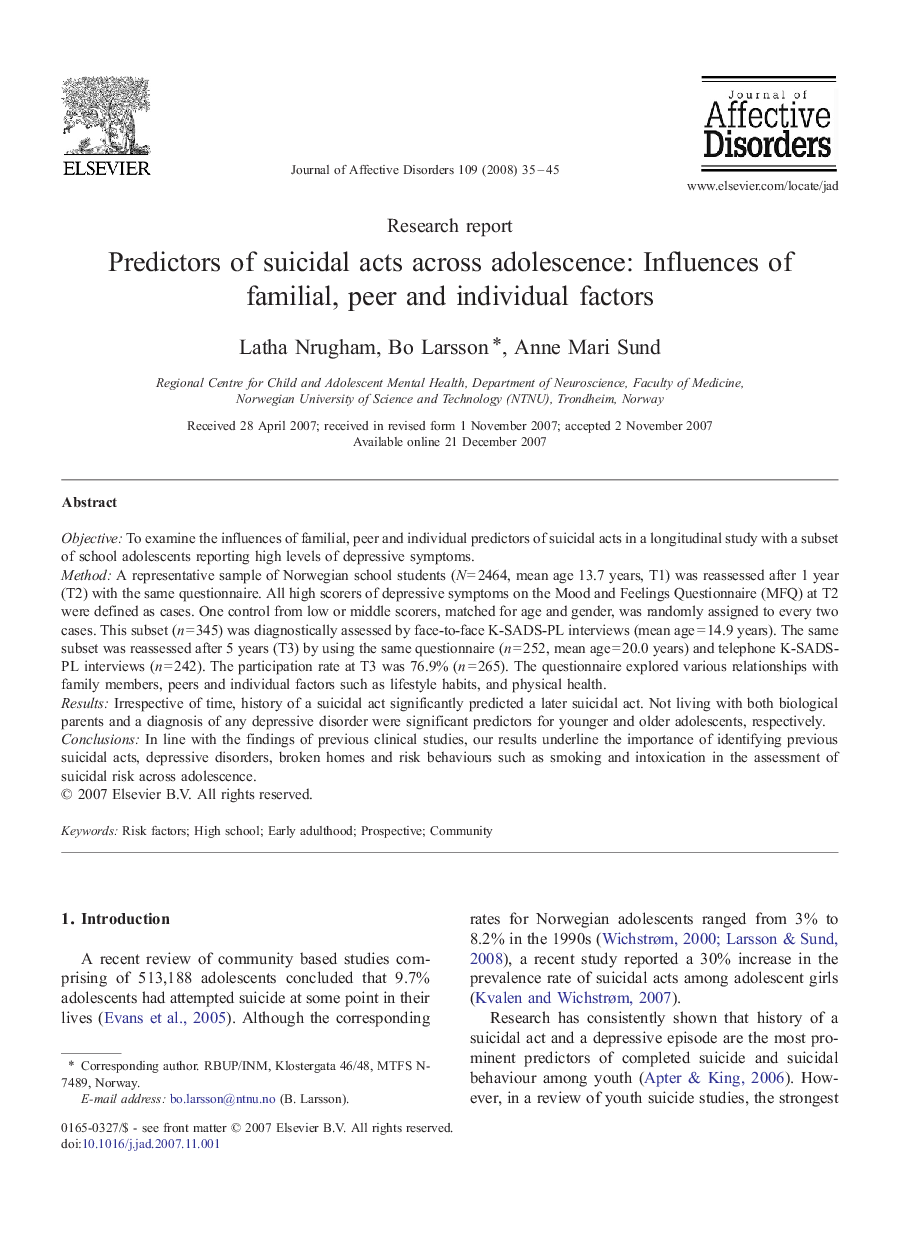| کد مقاله | کد نشریه | سال انتشار | مقاله انگلیسی | نسخه تمام متن |
|---|---|---|---|---|
| 4187520 | 1608212 | 2008 | 11 صفحه PDF | دانلود رایگان |

ObjectiveTo examine the influences of familial, peer and individual predictors of suicidal acts in a longitudinal study with a subset of school adolescents reporting high levels of depressive symptoms.MethodA representative sample of Norwegian school students (N = 2464, mean age 13.7 years, T1) was reassessed after 1 year (T2) with the same questionnaire. All high scorers of depressive symptoms on the Mood and Feelings Questionnaire (MFQ) at T2 were defined as cases. One control from low or middle scorers, matched for age and gender, was randomly assigned to every two cases. This subset (n = 345) was diagnostically assessed by face-to-face K-SADS-PL interviews (mean age = 14.9 years). The same subset was reassessed after 5 years (T3) by using the same questionnaire (n = 252, mean age = 20.0 years) and telephone K-SADS-PL interviews (n = 242). The participation rate at T3 was 76.9% (n = 265). The questionnaire explored various relationships with family members, peers and individual factors such as lifestyle habits, and physical health.ResultsIrrespective of time, history of a suicidal act significantly predicted a later suicidal act. Not living with both biological parents and a diagnosis of any depressive disorder were significant predictors for younger and older adolescents, respectively.ConclusionsIn line with the findings of previous clinical studies, our results underline the importance of identifying previous suicidal acts, depressive disorders, broken homes and risk behaviours such as smoking and intoxication in the assessment of suicidal risk across adolescence.
Journal: Journal of Affective Disorders - Volume 109, Issues 1–2, July 2008, Pages 35–45